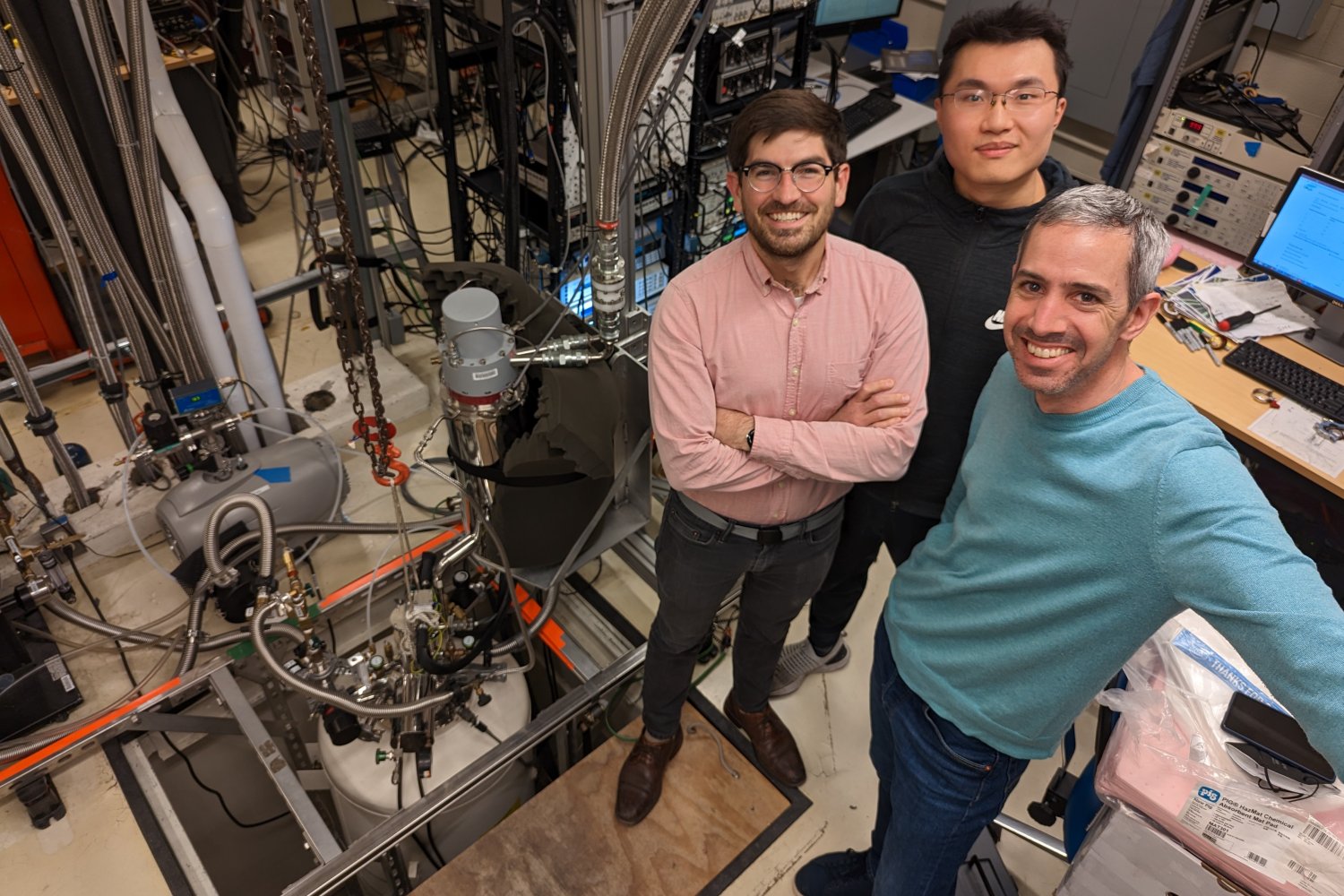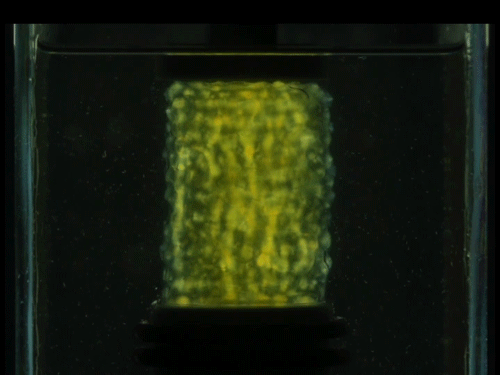
Transistors, the building blocks of modern electronics, are typically made of silicon. Because it’s a semiconductor, this material can control the flow of electricity in a circuit. But silicon has fundamental physical limits that restrict how compact and energy-efficient a transistor can be.
MIT researchers have now replaced silicon with a magnetic semiconductor, creating a magnetic transistor that could enable smaller, faster, and more energy-efficient circuits. The material’s magnetism strongly influences its electronic behavior, leading to more efficient control of the flow of electricity.
The team used a novel magnetic material and an optimization process that reduces the material’s defects, which boosts the transistor’s performance.
The material’s unique magnetic properties also allow for transistors with built-in memory, which would simplify circuit design and unlock new applications for high-performance electronics.
“People have known about magnets for thousands of years, but there are very limited ways to incorporate magnetism into electronics. We have shown a new way to efficiently utilize magnetism that opens up a lot of possibilities for future applications and research,” says Chung-Tao Chou, an MIT graduate student in the departments of Electrical Engineering and Computer Science (EECS) and Physics, and co-lead author of a paper on this advance.
Chou is joined on the paper by co-lead author Eugene Park, a graduate student in the Department of Materials Science and Engineering (DMSE); Julian Klein, a DMSE research scientist; Josep Ingla-Aynes, a postdoc in the MIT Plasma Science and Fusion Center; Jagadeesh S. Moodera, a senior research scientist in the Department of Physics; and senior authors Frances Ross, TDK Professor in DMSE; and Luqiao Liu, an associate professor in EECS, and a member of the Research Laboratory of Electronics; as well as others at the University of Chemistry and Technology in Prague. The paper appears today in Physical Review Letters.
Overcoming the limits
In an electronic device, silicon semiconductor transistors act like tiny light switches that turn a circuit on and off, or amplify weak signals in a communication system. They do this using a small input voltage.
But a fundamental physical limit of silicon semiconductors prevents a transistor from operating below a certain voltage, which hinders its energy efficiency.
To make more efficient electronics, researchers have spent decades working toward magnetic transistors that utilize electron spin to control the flow of electricity. Electron spin is a fundamental property that enables electrons to behave like tiny magnets.
So far, scientists have mostly been limited to using certain magnetic materials. These lack the favorable electronic properties of semiconductors, constraining device performance.
“In this work, we combine magnetism and semiconductor physics to realize useful spintronic devices,” Liu says.
The researchers replace the silicon in the surface layer of a transistor with chromium sulfur bromide, a two-dimensional material that acts as a magnetic semiconductor.
Due to the material’s structure, researchers can switch between two magnetic states very cleanly. This makes it ideal for use in a transistor that smoothly switches between “on” and “off.”
“One of the biggest challenges we faced was finding the right material. We tried many other materials that didn’t work,” Chou says.
They discovered that changing these magnetic states modifies the material’s electronic properties, enabling low-energy operation. And unlike many other 2D materials, chromium sulfur bromide remains stable in air.
To make a transistor, the researchers pattern electrodes onto a silicon substrate, then carefully align and transfer the 2D material on top. They use tape to pick up a tiny piece of material, only a few tens of nanometers thick, and place it onto the substrate.
“A lot of researchers will use solvents or glue to do the transfer, but transistors require a very clean surface. We eliminate all those risks by simplifying this step,” Chou says.
Leveraging magnetism
This lack of contamination enables their device to outperform existing magnetic transistors. Most others can only create a weak magnetic effect, changing the flow of current by a few percent or less. Their new transistor can switch or amplify the electric current by a factor of 10.
They use an external magnetic field to change the magnetic state of the material, switching the transistor using significantly less energy than would usually be required.
The material also allows them to control the magnetic states with electric current. This is important because engineers cannot apply magnetic fields to individual transistors in an electronic device. They need to control each one electrically.
The material’s magnetic properties could also enable transistors with built-in memory, simplifying the design of logic or memory circuits.
A typical memory device has a magnetic cell to store information and a transistor to read it out. Their method can combine both into one magnetic transistor.
“Now, not only are transistors turning on and off, they are also remembering information. And because we can switch the transistor with greater magnitude, the signal is much stronger so we can read out the information faster, and in a much more reliable way,” Liu says.
Building on this demonstration, the researchers plan to further study the use of electrical current to control the device. They are also working to make their method scalable so they can fabricate arrays of transistors.
This research was supported, in part, by the Semiconductor Research Corporation, the U.S. Defense Advanced Research Projects Agency (DARPA), the U.S. National Science Foundation (NSF), the U.S. Department of Energy, the U.S. Army Research Office, and the Czech Ministry of Education, Youth, and Sports. The work was partially carried out at the MIT.nano facilities.



















